With more than 5,000 lives lost, it was inevitable that the terrorist attacks of September 11 would deeply affect former University of Toronto students living and working in the United States. We note with sadness the passing of Arron Dack, a 1987 alumnus who was a guest in the World Trade Center’s North Tower that morning.
Shortly after the attacks, President Robert Birgeneau sent an e-mail offering his condolences to all of our U.S. alumni. A flood of responses ensued: some were brief expressions of gratitude, while others told long tales of lives changed forever that dreadful date.
The following stories represent only a fraction of those we might tell. Fortunately, most people were not touched in such a direct way as the alumni profiled here.
Arron Dack, who earned a bachelor of applied science in 1987 while attending Victoria College, was many men in one: a business executive, husband and father of two young children. He spoke several languages, travelled widely and was a master of the one-liner. He was only 39 years old when he perished in the World Trade Center’s North Tower while attending a conference on the 106th floor.
Dack came to Canada from England at the age of eight with his mother, Selena Dack-Forsyth. He was an overachiever from an early age, but when he encountered the Canadian “new math” curriculum, he was stymied. But math, which had been his bête noire, became a source of joy in high school. It propelled him onto the dean’s list at the University of Toronto, and to his subsequent success in capital-markets technology.
Dack “loved New York,” Dack-Forsyth says from her home in Port Hope, Ont. “And, ironically, he particularly loved the World Trade Center – partly because the word ‘world’ was in there, but also because it epitomized the kind of work he did.”
Dack-Forsyth remembers the week of her son’s death as a time of unspeakable pain, alleviated somewhat by the overwhelming kindness of strangers. She describes the atmosphere at the Lexington Armory – where relatives went to register missing loved ones and to tape up their pictures – as “surreal;” a place of hideous grief, where roses decorated every table, and a battalion of babysitters, therapists, translators and counsellors did everything they could for the bereaved. The townsfolk of Montclair, N.J., where Dack lived with his wife, Abigail, and children, Olivia and Carter, took turns delivering meals to the family.
Larger than life. Those three words serve as the most fitting epitaph for a man who enjoyed playing lacrosse as a youth, passed the Ontario Securities Course exam “in his spare time” and even fooled a roommate, who later served as best man at his wedding, into thinking he was a spy. “My world will never be the same,” Dack-Forsyth wrote in her weekly column for the Port Hope Evening Guide. “But I have wonderful memories of a son who has, unwittingly, become a part of history.”
Will Jarvis
From time spent on military aircraft as part of his job at the Pentagon, Will Jarvis (who graduated with a bachelor of applied science in 1987 while attending New College) knows what aviation fuel smells like.
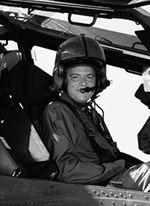
That smell was his only clue that a plane had crashed into the Pentagon, where he works as an operations research analyst for the Office of the Secretary of Defense. Jarvis, who was around the corner from the disaster, tried but failed to see the plane when he left the building. “There was just nothing left. It was incinerated. We couldn’t see a tail or a wing or anything,” he says. “Just a big black hole in the building with smoke pouring out of it.”
For someone sitting only 300 metres away from the carnage of American Airlines Flight 77, Jarvis and his officemates were surprisingly well insulated from it. “We thought the plane was a dump truck backing into the building, because there was a lot of construction going on,” he says. The group noticed that the sky was darker than normal, but still didn’t think much of it. “Then I saw little bits of silver falling from the sky,” says Jarvis.
Evacuation, when it came, was a decidedly orderly affair, since no one sensed the magnitude of what had happened. Nor could they have known that one person from their department, a man named Brian Jack, was actually on the plane.
In informal conversations, Jarvis and his colleagues often speculated on how terrorists could attack the Pentagon. “We were thinking they could poison the water or food supply,” he says. “Or get in by joining a tour group. But no one ever thought a hijacked plane would crash into the building.”
The American-born Jarvis still has family in the northern Ontario town of New Liskeard. “I went up to Canada shortly after this incident,” he says. “Whenever I’m up there, I feel like nothing like this could ever happen.”
Livon Neil
Sure, Livon Neil is one of the lucky ones. He was in the North Tower on September 11, but he survived. He was only on the 38th floor, and well out of there by the time it fell. But while Neil may have escaped unharmed, he is most certainly not unscathed.
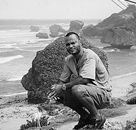
After diving under his desk in response to what he thought was an earthquake, the 30-year-old systems analyst (who graduated with a bachelor of science in physiology and human biology in 1994 while attending New College) heard “screaming coming from the elevator shaft, like ladies screaming. And I saw dust coming out, smoke.” He ran toward the stairs, only to hear more yelling from below. There seemed to be no way out for anybody. He huddled in the stairway for some 20 minutes, until a phalanx of firefighters – many of them soon to sacrifice their own lives – arrived and opened an exit for him and his group. “While I was coming out,” Neil says softly, “it was like a war zone. I looked up and saw a person in mid-air. I looked to my right in the courtyard and there were body parts.”
Thanks to counselling and the healing properties of time, Neil’s nightmares about September 11 have eased somewhat. “Now I do have some dreams,” he says, “but they’re not as bad.” He’s still in a state of heightened observance at airports, though, and admits it’s difficult to relate what he’s seen and heard.
Neil lives in Toronto and commutes regularly to New York, where his company implements software for financial institutions. Six weeks after the attack, he hesitantly boarded a subway to Ground Zero, in search of some closure. “I just had to go back and see it. It helped to go down there, to realize what I’d been through. To give thanks.” And to offer a silent thought, he says, “for those people who are still there.”
Chief Coroner Dr. Jim Young and Deputy Chief Dr. Barry McLellan
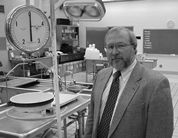
When the American disaster’s enormity became clear, Canada was prepared to offer a full range of medical assistance. Its citizens, too, donated blood by the gallon. But as dusk fell, the black truth dawned: New York was importing only coroners.
Ontario’s coroner system is internationally recognized, which is why Dr. Jim Young (MD 1975), chief coroner and head of Emergency Measures Ontario, and Dr. Barry McLellan (MD 1981), deputy chief coroner of forensic services, found their services in demand. It was also thought, initially, that some 300 Canadians might have died, a number that has since been reduced to 24.
The coroners were charged with helping Canadian families identify their loved ones. To this end, one of their tasks was to collect DNA samples from each family and send them to labs to develop DNA profiles. DNA came from various sources: toothbrushes, makeup, razors, hairbrushes. To date, though, only three of the missing have been identified; others may have vanished in the rubble, though Dr. McLellan remains “cautiously optimistic” that further testing will result in more identifications.
Naturally, he cannot make predictions; this event transcended the bounds of what he normally does. Even though Dr. Young has previously headed a number of high-profile investigations, including the 1998 Swissair crash off Peggy’s Cove, N.S., and the Walkerton, Ont., inquiry into the E. coli deaths of May 2000, the mass grief and confusion of September 11 left both doctors stricken with pain. “There’s no book written on how it should be done,” says Dr. McLellan, “and nothing you can call on as far as previous experience.”
Toward the end of their two-and-a-half-week stay in the city, Dr. Young and Dr. McLellan tried to relieve some of their tension with a trip to Yankee Stadium, where the team was playing for the first time after the tragedy. Everything about the game was tinged with reminders of what had happened: tributes to the rescue workers, a speech by the mayor, the seventh-inning stretch conducted to the tune of “God Bless America.”
“Throughout the entire game, there was a recognition that this wasn’t just good old-fashioned baseball,” Dr. Young relates, obviously moved by his final vision of the trip: a great city stirring, with aching slowness, back to life.
Brian Clark
On the morning of September 11, Brian Clark (who earned a bachelor of applied science in 1970, and a master of business administration in 1971) sat with colleagues in his office on the 84th floor of the World Trade Center’s South Tower and watched their sister building burn. He knew a terrible accident had happened there; he heard co-workers exclaim that people were jumping from windows. But neither Clark nor anybody else in the New York office of the international brokerage firm Euro Brokers had any idea what had caused the dreadful accident.
Nor did it occur to them that they would be next.
Suddenly, United Airlines Flight 175 crashed into their tower, only five floors below. “I did not see the plane coming,” says Clark, “and all we felt was a tremendous rumble as if it was an earthquake. Our floor fell apart, the lights went out, the ceilings collapsed – it was instant chaos.” In the end, only three of the 60 or so Euro Brokers employees left on the floor (the other 220 had already evacuated the building) would survive. One of them was Clark.
At random, he chose the one stairway that was left passable after the crash. The stairs “buckled in a few places,” he says, “and you could peek through the cracks and see flames.” On the 81st floor, just above the conflagration, he and several co-workers began arguing with a couple who were heading up. “You’ve got to go up,” Clark quotes them as saying. “We’ve just come from a floor in flames.”
As Clark was pondering which way to go, he heard a plaintive voice behind the wall, calling for help. It belonged to Stanley Praimnath, an employee of Fuji Bank and a complete stranger. Clark squeezed through a hole in the wall to assist him; in that time, all but one of his colleagues were persuaded to go back to their floor. Descending through drywall debris and rubble in a deserted stairway, Clark and Praimnath somehow got under the fire. On floor 68, though, Clark encountered Jose Marrero, another Euro Brokers employee who was, fatefully, on his way up to try to help others. “I saw a hero making a bad decision,” Clark recalls. Clark tried to convince him not to go, but Marrero was adamant. He was the last person the pair encountered on the stairway before escaping to safety minutes later.
A week to the awful day, Clark had a dream about Marrero that salved his troubled soul. “Jose came to me in a white, loose-fitting shirt,” he recalls. “He came to the foot of my bed and looked down at me. I said, ‘Jose! You’re alive! How did you do that?’ And he gave me a knowing smirk as if to say, ‘You’ll figure it out.'”
Clark is back at work now, in new office space in lower Manhattan. His company lost 61 employees that day. In support of their families, he presides over the Euro Brokers Relief Fund. “I feel like I’ve been given additional time – to do what, I’m not sure,” he says.
Jordan Zed
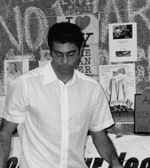
We’re living in a very unusual time now,” says Jordan Zed, as he contemplates the current climate of war and hypervigilance. For Zed, 22, the pain of this “unusual time” was immediate: his 30-year-old roommate, Thomas Pedicini, was lost in the World Trade Center that day.
Pedicini was a trader with Cantor Fitzgerald, a bond-trading company that lost 733 of 1,000 employees at its World Trade Center office. As soon as news of the disaster hit, Zed, a former Faculty of Music student who had attended Victoria College, was deluged with “a flood of calls.” “I didn’t know what tower he was in or what floor he worked on,” says the singer/songwriter and pianist. “It was just something we never talked about.”
It turned out that Pedicini worked on the 104th floor of the North Tower. “And when he didn’t come home that night, I got this sick feeling in my stomach,” says Zed. “You know, when you can’t swallow.”
For weeks, Pedicini’s mother, Nancy, clung to the hope that her son was alive under the rubble. “When we went into his room, everything was exactly the way he’d left it that morning,” says Zed. “It was just heart-wrenching.” One of the nicer surprises was a tape of songs that Pedicini – an aspiring singer and guitar player – had recorded, unbeknownst to his family. “They were so happy to have it,” says Zed, who recently performed a benefit concert and raised $15,000 for the New York State World Trade Center Relief Fund in his home town of Saint John, N.B. “You listen to it, and it sounds like he’s really in the room.”
Ann Schofield
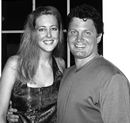
It’s a miracle that Ann Schofield’s apartment building is still standing. Home for Schofield, who graduated with a bachelor’s degree in English and criminology in 1993 while attending Victoria College, is a mere 50 metres from where the World Trade Center once stood. It’s also where she was trapped for several frightening hours, hoping her complex would not be destroyed by the deadly rain of steel and glass.
Schofield, a lawyer with the firm of McDermott, Will & Emery, would ordinarily have been at work when the planes hit, but she was awaiting a furniture delivery to her 26th-floor apartment. Facing south onto the Hudson River, she could not see the crashes half a block away that rocked her building.
After the first tower was hit, and later when the buildings were burning but still standing, Schofield made phone contact with her husband, Jim Barton, who had landed earlier that morning at Newark International Airport and was driving to his office in Princeton, N.J. He convinced her to leave the building.
As Schofield was packing a bag, she heard an “ominous rumbling that sounded like an avalanche.” Her building became enveloped in thick, black smoke. Then all light vanished, power, water and phone lines were lost, and nothing was visible outside but “pitch black soot with business papers swirling around in it.” She began her escape, but in the hallway a neighbour intercepted her. “He said, ‘You’re absolutely out of your mind! You can’t leave now.'” She stepped into his north-facing apartment and was shocked to realize that what had caused the “ominous rumbling” was the South Tower collapsing. Staring out the window in disbelief, she then saw the second tower crumble. The two ran back to her place and took refuge in the bathroom, the only windowless room. Then they crept to her living room and waited four hours until firefighters knocked on the door and told them to leave.
Schofield spent that time “sick with worry” for Barton. She realized the guilt he’d feel for advising her to step out into a potentially fatal situation. “I made it to a rescue boat at 1:45 p.m., and I really can’t describe the phone call we had, that kind of relief. He felt so helpless… he had made up his mind that he was going to swim the Hudson if he hadn’t heard from me by three o’clock.”
After staying two months in a condo owned by one of her firm’s partners, Schofield and Barton returned home. Air quality in the neighbourhood is still a concern. “At the same time we have a good healthy dose of perspective,” she says, “because it’s a lot worse for about 3,300 other families than it is for us.”
Ian MacRae
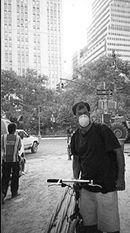
As a PhD student in comparative literature, Ian MacRae (MA 2001) knows how a simple piece of writing can give shape to senseless events. MacRae, who was in LaGuardia Airport at the time of the attacks, was discussing them one night with his friend Matt Smith. Smith had lost his good friend Jeremy Glick, a “black belt, strong, leader kind of guy,” who had heroically attempted to overtake hijackers on the doomed United Airlines Flight 93, which ultimately crashed in a Pennsylvania field. “He [Smith] was very shaken up by that,” says MacRae. “He said, “You’ve got to write this stuff down.'” So MacRae sat and wrote a long diary piece about New York City in the strange, hushed days following its devastation.
First, he described the airport: “banks of phones filled; everyone on earth had a cellphone to their ear, telling their wives and husbands that they loved them.” Rumours flew: eight planes hijacked; the Federal Reserve Building in Cleveland destroyed; the Washington Mall bombed. MacRae believed all these, but did not believe the one about the World Trade Center falling.
He wrote of riding his bike downtown the following day: “this city that never sleeps is one thing it never, ever is: silent.” Soon, though, people re-emerged, and acts of viciousness were countered by acts of beauty. MacRae heard tell of lootings, buthe also saw impromptu park concerts, where “people formed human chains to ferry free food from arriving trucks.”
For MacRae, who is a field producer and writer for Canadian Geographic Nature Televison, storytelling has proven the most powerful antidote of all. “People were brought together by this,” he says. “Everybody has a story to tell, and everybody’s in the mood to share it.”
Recent Posts
U of T’s 197th Birthday Quiz
Test your knowledge of all things U of T in honour of the university’s 197th anniversary on March 15!
Are Cold Plunges Good for You?
Research suggests they are, in three ways
Work Has Changed. So Have the Qualities of Good Leadership
Rapid shifts in everything from technology to employee expectations are pressuring leaders to constantly adapt


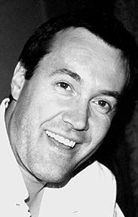



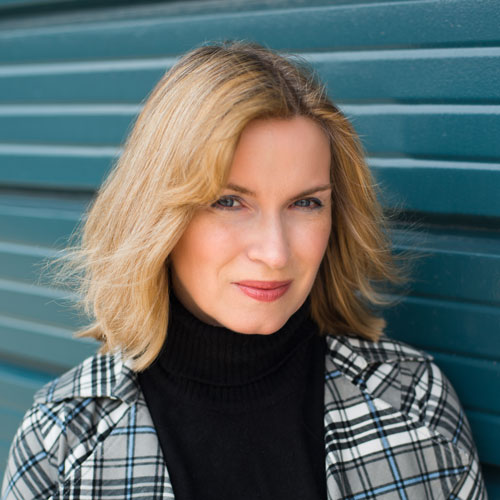
One Response to “ Testimony to Tragedy ”
In his recollections of September 11, Ian MacRae said he heard of lootings, but also of impromptu park concerts where “people formed human chains to ferry free food from arriving trucks.” It is by now a cliché that catastrophe brings out the best in us. Whether it be a hurricane, a fire or a terrorist attack, we help, we comfort, we feed, we talk, we mourn, we act as we ought to. What puzzles me is this: why can’t we behave toward each other like this all the time? Maybe we should try.
Geoff Rytell
BEd 1975 OISE
Toronto